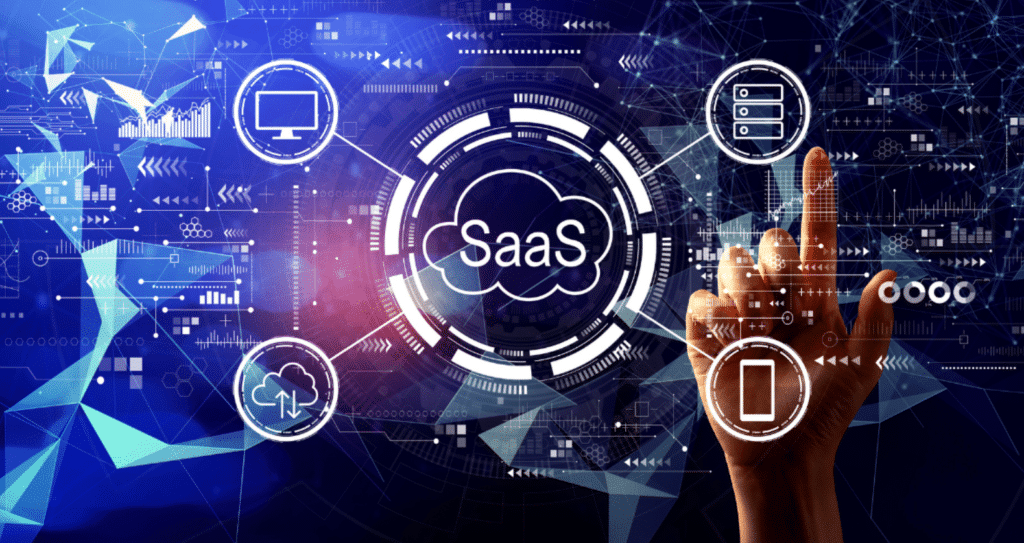In the ever-evolving landscape of business technology, SaaS ERP (Software as a Service Enterprise Resource Planning) has emerged as a game-changer for organizations seeking flexibility, scalability, and efficiency in their operations. Let’s delve into the world of SaaS ERP and explore how it is reshaping the way businesses manage their resources.

I. Introduction
A. Defining SaaS ERP
SaaS ERP refers to cloud-based Enterprise Resource Planning software that is delivered as a service. Unlike traditional ERP systems, SaaS ERP operates on a subscription model, offering businesses access to a centralized platform for managing various processes without the need for extensive infrastructure.
B. The Shift to Cloud Computing
The shift to SaaS ERP is part of a broader trend toward cloud computing, where businesses leverage remote servers hosted on the internet to store, manage, and process data. This approach provides a host of benefits, including cost-effectiveness, accessibility, and streamlined maintenance.
II. Key Features of SaaS ERP
A. Accessibility and Flexibility
One of the defining features of SaaS ERP is its accessibility from any location with an internet connection. This flexibility allows businesses to adapt to remote work environments and provides real-time access to critical data.
B. Cost-Effectiveness
SaaS ERP eliminates the need for substantial upfront investments in hardware and software. Instead, businesses subscribe to the service, paying a regular fee, which often includes maintenance, updates, and support, leading to predictable and controlled costs.
C. Scalability
As businesses grow or experience fluctuations in demand, SaaS ERP scales seamlessly. This scalability ensures that organizations can adjust their usage and features based on evolving needs, making it an ideal solution for businesses of all sizes.
D. Automatic Updates
SaaS ERP providers handle updates and maintenance tasks, ensuring that businesses always operate on the latest version of the software. This eliminates the burden on internal IT teams and ensures security patches are applied promptly.
III. Advantages of SaaS ERP
A. Rapid Implementation
Traditional ERP implementations can be lengthy and complex. SaaS ERP, however, typically boasts quicker implementation times as it leverages standardized processes and configurations.
B. Lower Total Cost of Ownership
The subscription-based model of SaaS ERP reduces the total cost of ownership. With no need for extensive hardware, ongoing maintenance, or dedicated IT personnel, businesses can allocate resources more efficiently.
C. Improved Collaboration
With real-time access to a centralized database, SaaS ERP fosters collaboration among team members, whether they are working in the office or remotely. This enhances communication and ensures everyone is working with the most up-to-date information.
D. Enhanced Security Measures
SaaS ERP providers invest heavily in robust security measures to protect their clients’ data. This often includes encryption, multi-factor authentication, and continuous monitoring to safeguard against potential threats.
IV. Challenges and Considerations
A. Data Security Concerns
While SaaS ERP providers prioritize security, businesses must still consider the implications of storing sensitive data in the cloud. Robust cybersecurity measures and compliance with industry standards are crucial.
B. Customization Limitations
SaaS ERP solutions may have limitations regarding customization to fit unique business processes. Organizations need to evaluate whether the available configurations align with their specific needs.
C. Dependence on Internet Connectivity
As SaaS ERP operates in the cloud, a reliable internet connection is essential. Businesses in remote areas or with unreliable internet access may face challenges in utilizing the system consistently.
V. Choosing the Right SaaS ERP Solution
A. Industry-Specific Requirements
Different industries have unique ERP needs. Businesses should evaluate SaaS ERP solutions that cater to their specific industry requirements, ensuring a seamless fit.
B. Integration Capabilities
SaaS ERP should seamlessly integrate with existing systems and software to avoid disruptions in operations. Compatibility with other business tools enhances overall efficiency.
C. Vendor Reputation and Support
Selecting a reputable SaaS ERP vendor is paramount. Businesses should assess vendor reputation, customer reviews, and the level of support provided to ensure a reliable partnership.
VI. Real-Life Success Stories
A. Businesses Thriving with SaaS ERP
Exploring real-life success stories of businesses that have implemented SaaS ERP provides valuable insights into the transformative impact on efficiency, collaboration, and overall business success.
B. Lessons Learned
Analyzing lessons learned from successful SaaS ERP implementations helps businesses navigate potential challenges and make informed decisions during the adoption process.
VII. Future Trends in SaaS ERP
A. AI and Machine Learning Integration
The future of SaaS ERP involves increased integration of AI and machine learning, enhancing automation, predictive analytics, and decision-making capabilities.
B. Advanced Reporting and Analytics
SaaS ERP systems will continue to evolve their reporting and analytics features, providing businesses with even more powerful tools for data-driven decision-making.
C. Enhanced Mobile Functionality
As mobile technology advances, SaaS ERP systems will likely prioritize enhanced mobile functionality, allowing users to access critical information and perform tasks on the go.
VIII. Conclusion
A. Embracing the Future with SaaS ERP
In conclusion, SaaS ERP represents a pivotal shift in how businesses manage their resources and operations. With its accessibility, cost-effectiveness, and scalability, SaaS ERP is ushering in a new era of efficiency and adaptability. As businesses continue to embrace the benefits of cloud-based solutions, SaaS ERP stands as a testament to the transformative power of technology.